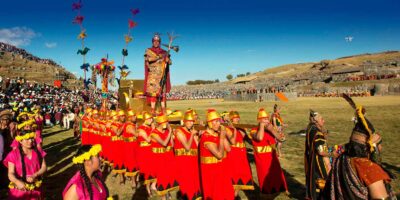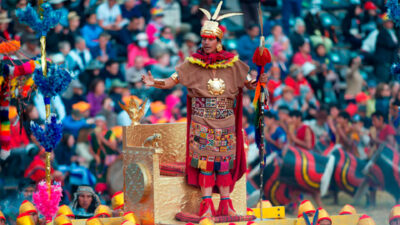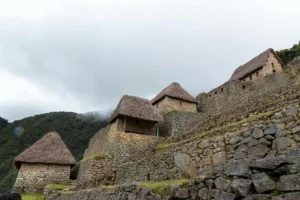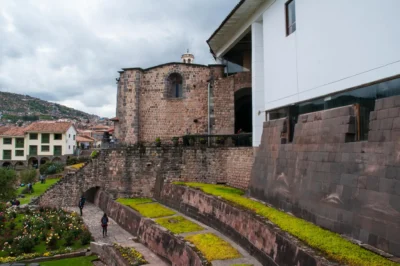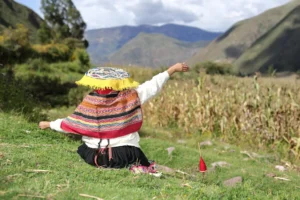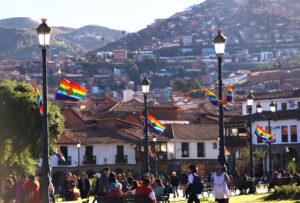The Inca Empire was one of the most important civilizations in South America, spanning territories from Ecuador to Chile. This empire is known for its advancements in architecture and agriculture, as well as its unique social organization. Places like Cusco, Machu Picchu, and the Sacred Valley stand out not only for their beauty but also for reflecting the history and legacy of this culture.
Despite the changes brought by colonization, many Inca traditions and knowledge remain alive in Andean communities, preserving their memory. With Machu Picchu Wayna, we will explore the origins of the Inca Empire, its social and political organization, its cultural and architectural achievements, and its impact on present-day Peru.
Who were the Incas?
The Incas were the most advanced civilization in the Andean region before the arrival of the Spanish. Although their exact origin is surrounded by legendary accounts, it is believed that they began as a small community in Cusco, from where they expanded to form Tahuantinsuyo, the largest empire in pre-Columbian America. Their organizational system allowed the integration and unity of their territories and cultures, leaving a legacy that still endures in the Andes.
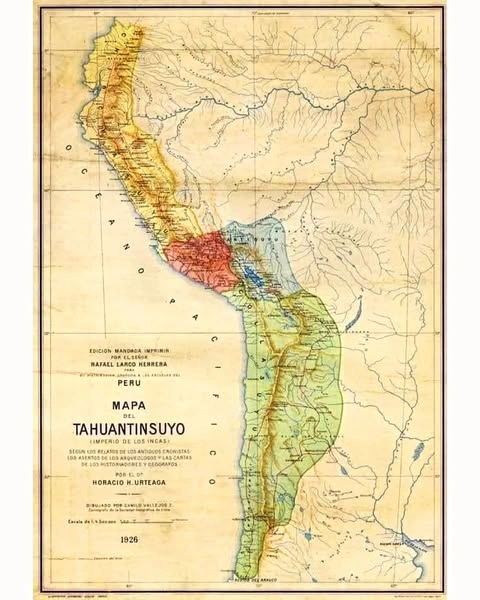
Origin and Brief History of the Inca Empire
The origin of the Inca Empire is surrounded by mythological accounts and historical data. According to legends, the Incas were descendants of Manco Cápac and Mama Ocllo, who were sent by the Sun God to found civilization in Cusco, considered the center of the Andean world. Although there is no exact evidence of this story, it is known that the Incas began as a small group that settled in the Cusco Valley around the 12th century.
Over the centuries, this community consolidated its power under a series of rulers known as “Sapa Incas.” It was in the 15th century, during the reign of Pachacútec, that the Incas began a vast territorial expansion. Using military strategies, alliances, and an efficient administrative system, they incorporated a vast area stretching from southern Colombia to central Chile. This territory was called Tahuantinsuyo, which in Quechua means “the four united regions.”
Tahuantinsuyo was organized into a hierarchical political and social system, with the Sapa Inca at the top, regarded as a sacred figure. The economy was agriculture-based, with advanced techniques such as terracing and irrigation canals, and relied on the principle of communal reciprocity. The Incas also excelled in architecture, with masterpieces such as Machu Picchu and Sacsayhuamán, reflecting their advanced engineering knowledge.
The peak of the empire ended in the 16th century with the arrival of the Spanish conquistadors led by Francisco Pizarro. The capture of Atahualpa, the last Sapa Inca, marked the beginning of the fall of Tahuantinsuyo. Despite this, the Inca legacy remains alive in the Quechua language, traditions, and customs of present-day Andean communities.
Main Characteristics of the Incas
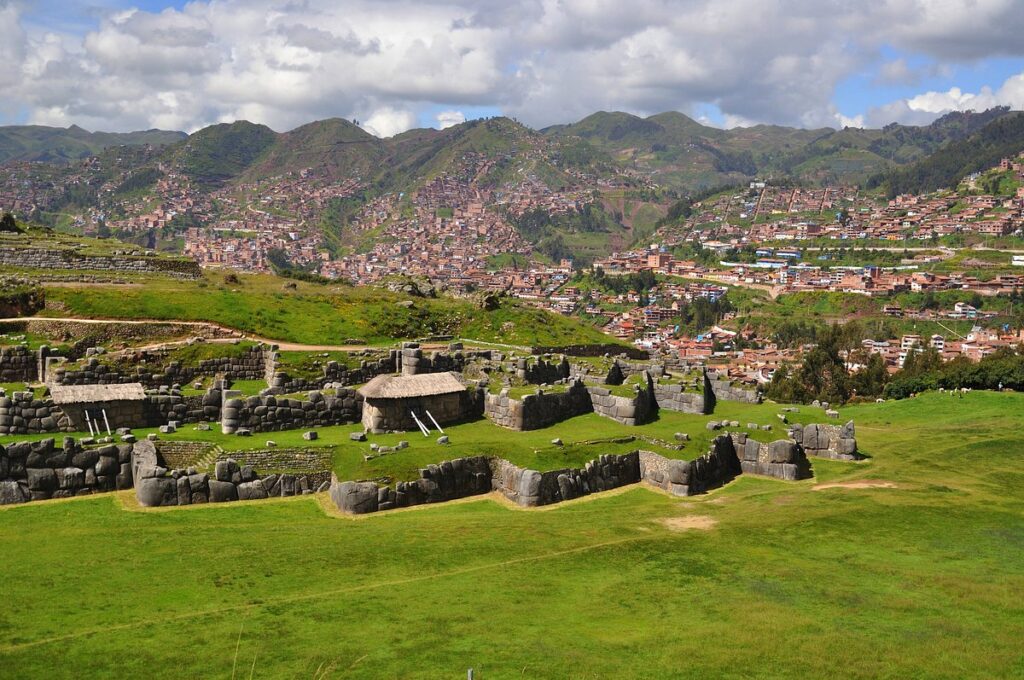
The main characteristics of the Incas are as follows:
Hierarchical Political and Social Organization
The Incas were organized under a centralized system led by the Sapa Inca, considered the son of the Sun and the highest political, military, and religious authority. Society was divided into classes, with the nobility (priests, governors, and military leaders) at the top, followed by artisans, farmers (hatun runa), and servants. Communities were organized into ayllus, which were social units based on family ties and cooperation.
Territorial Expansion and Efficient Administration
The empire, known as Tahuantinsuyo, was divided into four main regions (suyus):
- Chinchaysuyo
- Antisuyo
- Collasuyo
- Contisuyo
These suyus converged in Cusco, the capital of the empire. To manage this vast territory, the Incas developed a road system (Qhapaq Ñan) that connected the suyus, along with administrative centers and storage facilities for the redistribution of goods.
Advancements in Architecture and Engineering
The Incas are famous for their monumental architecture, with notable examples such as:
- Machu Picchu
- Sacsayhuamán
- Ollantaytambo
They used advanced construction techniques without mortar (pirca), which ensured earthquake-resistant structures. Additionally, they created agricultural terraces and irrigation canals to optimize the use of mountainous terrain.
Economic System Based on Reciprocity
The Inca economy did not rely on money, but on exchange and redistribution of goods. Community labor (mita) was essential, allowing for the construction of public works and the maintenance of agriculture. The state managed resource distribution, ensuring that all communities had access to food and basic products.
Religion and Worldview
The Incas were polytheistic, and their main deity was the Sun (Inti). Other important gods included:
- Pachamama (Mother Earth)
- Viracocha (Creator of the Universe)
Their ceremonies included sacrifices and offerings to maintain harmony between humans, nature, and the gods. They also believed in an afterlife, as reflected in the mummification of their rulers and leaders.
These characteristics allowed the Incas to establish an organized and prosperous empire, leaving behind a cultural and architectural legacy that is still visible today.
Geographical Location of the Inca Empire
The Tahuantinsuyo extended over a vast territory, ranging from southern Colombia to central Chile, including regions of Ecuador, Peru, Bolivia, and northwestern Argentina. Its capital, Cusco, was the political and cultural center of the empire, known as the “navel of the world.”
From this city, the Incas built the Qhapaq Ñan, an extensive network of roads that connected the entire empire, facilitating communication and trade between the different regions.
Political Organization of the Incas
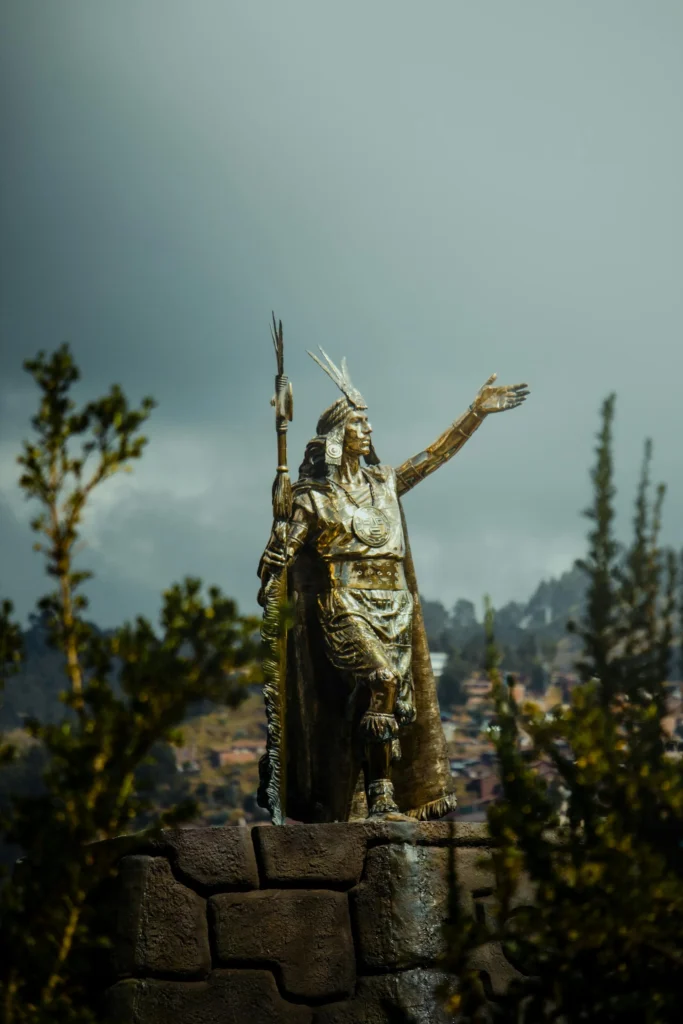
The political organization of the Incas was centralized, with the Sapa Inca as the highest authority of the empire. This ruler was considered a sacred being, the son of the Sun, and had absolute power over political, military, religious, and social affairs. Their political structure was organized as follows:
The Sapa Inca
The supreme leader of Tahuantinsuyo, regarded as a divine figure, was the main authority responsible for administering the empire. He made the most important decisions and served as the connection between the gods and the people.
The Nobility
The elite consisted of the royal family and aristocracy, who played key roles in the administration and governance of the empire. Among them was the Imperial Council, made up of close relatives of the Sapa Inca and experienced advisors who assisted in decision-making.
The Curacas
These were the local leaders of the conquered communities, responsible for overseeing and ensuring compliance with laws and taxes. Although they remained leaders of their ayllus (communities), they were subordinate to the Sapa Inca’s authority.
Territorial Division
The Tahuantinsuyo was divided into four major regions (suyus):
- Chinchaysuyo
- Antisuyo
- Collasuyo
- Contisuyo
Each suyu had its own regional administration, led by a governor called “Apu”, who reported directly to the Sapa Inca.
Control and Communication System
The Incas developed an efficient road system, the Qhapaq Ñan, which connected all regions of the empire, facilitating administration and communication. Messages were sent through chasquis (messengers), and quipus were used as tools for recording economic and administrative data.
Redistributive System
The Inca administration was based on reciprocity and redistribution. The state collected taxes in the form of agricultural products, textiles, or labor (mita) and then redistributed these resources among the population according to their needs.
This structure allowed the Incas to maintain control over a vast and diverse territory, integrating numerous cultures under a unified political system.
The Inca and His Role in Society
The Inca was the highest authority of the empire and was regarded as a god on Earth. His main responsibility was to ensure the well-being of Tahuantinsuyo and safeguard the security of his empire. Additionally, he played a central role as a religious, military, and political leader, making all the important decisions for the governance of the empire.
Government Structure
Below the Inca, there were officials and local leaders who governed on behalf of the central authority. Each suyu was overseen by a high-ranking official, responsible for ensuring compliance with laws and the obligations of each community. These officials played a crucial role in maintaining communication between the Inca and the local communities.
Social Structure of the Incas
The social structure of the Incas was hierarchical and strictly organized, ensuring the efficient functioning of the empire. It was based on well-defined roles and the principle of reciprocity and community cooperation.
1. The Sapa Inca
The highest authority in the social and political hierarchy, the Sapa Inca was considered the son of the Sun. He held absolute power and was seen as a divine figure, ruling with total authority over Tahuantinsuyo.
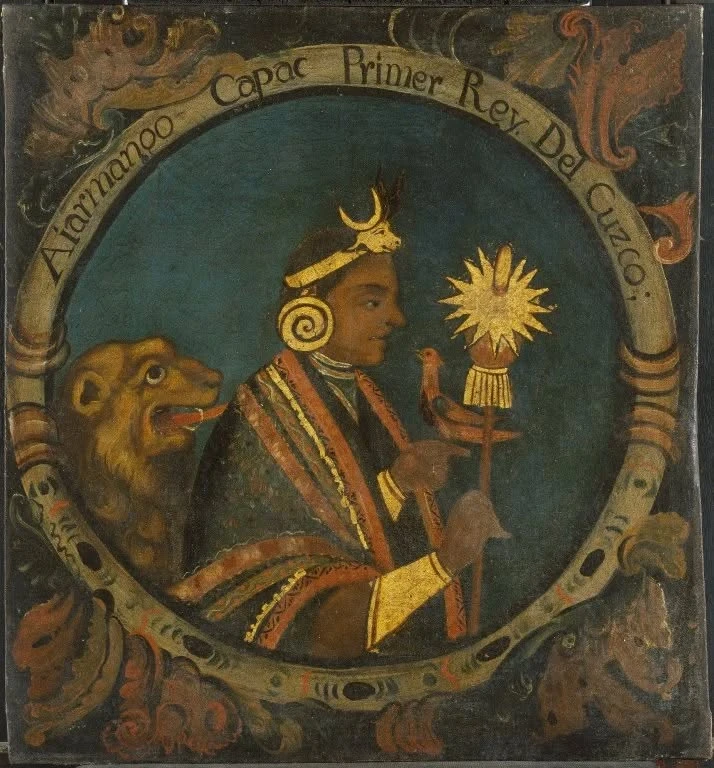
2. The Nobility
This group consisted of the Sapa Inca’s close relatives and high-ranking leaders. It was divided into two categories:
- Nobleza de sangre (Blood Nobility): These were the direct relatives of the Inca, including his siblings, wives, and descendants, who held the most important positions in the empire.
- Nobleza de privilegio (Privileged Nobility): This group was made up of curacas and local leaders from the conquered territories who had been incorporated into the Inca system.
3. The Priests
The priests were responsible for religious ceremonies and the worship of the gods, especially the Sun. They played a crucial role in society by ensuring the connection between the spiritual and earthly worlds.
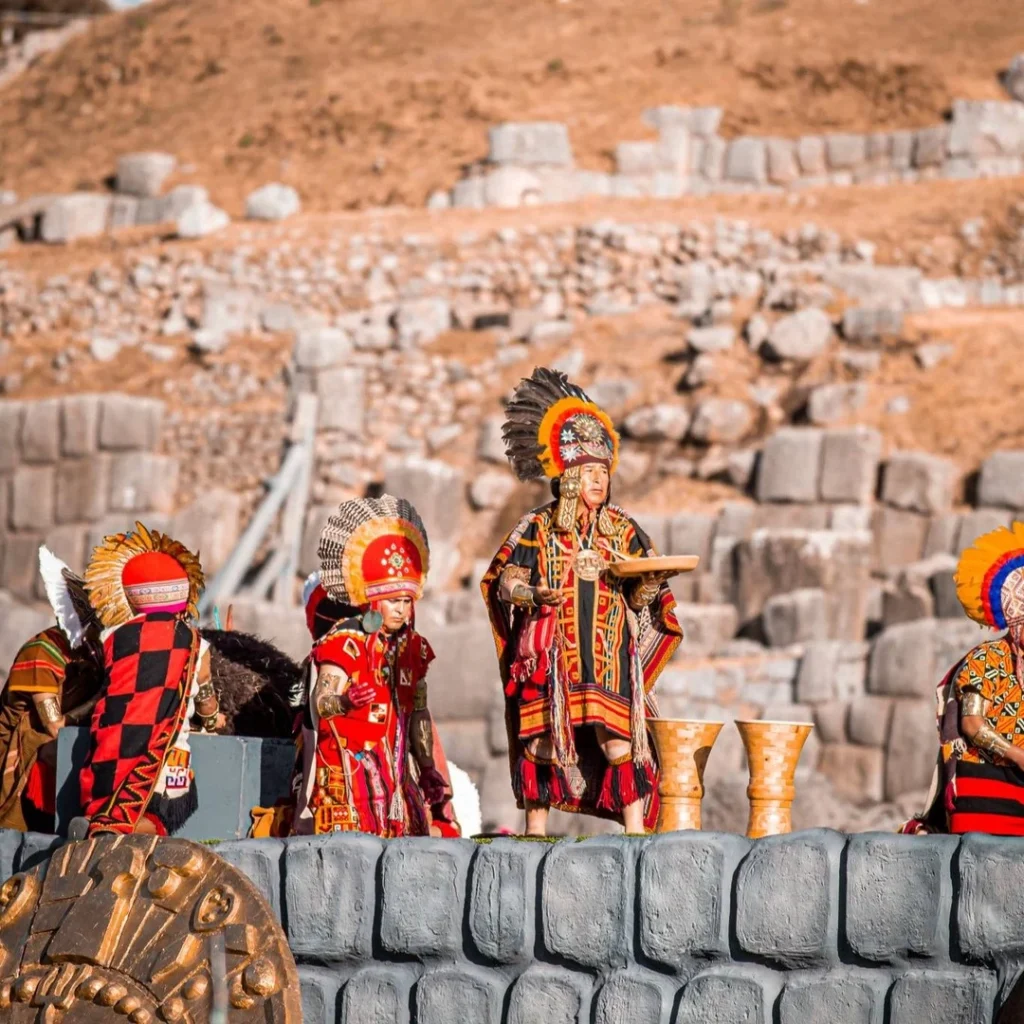
4. The Artisans and Farmers (Hatun Runa)
They were the working class that sustained the Inca Empire’s economy. Farmers produced food using advanced techniques such as agricultural terraces, while artisans crafted textiles, ceramics, and other essential goods. Their work was carried out under the mita system, a form of tribute through communal labor.
5. The Yanaconas
They were the servants of the state or the nobility. Although they were not tied to an ayllu, they worked directly for the elite or on state projects.
6. The Mitimaes
They were groups relocated by the state from their places of origin to new regions to promote cultural and political integration within the empire. They also served as a means to consolidate Inca control in strategic areas.
Slaves (in Exceptional Cases)
Although it was not common, some prisoners of war or individuals punished for crimes were temporarily enslaved.
Social Classes and Their Importance
The social classes in the Inca Empire were crucial for maintaining the organization and balance of Tahuantinsuyo. They enabled an efficient distribution of responsibilities, ensuring centralized leadership, territorial administration, religious legitimacy, and economic sustenance. Each social group played a role in the empire’s functioning, reinforcing its expansion, cultural integration, and overall stability.
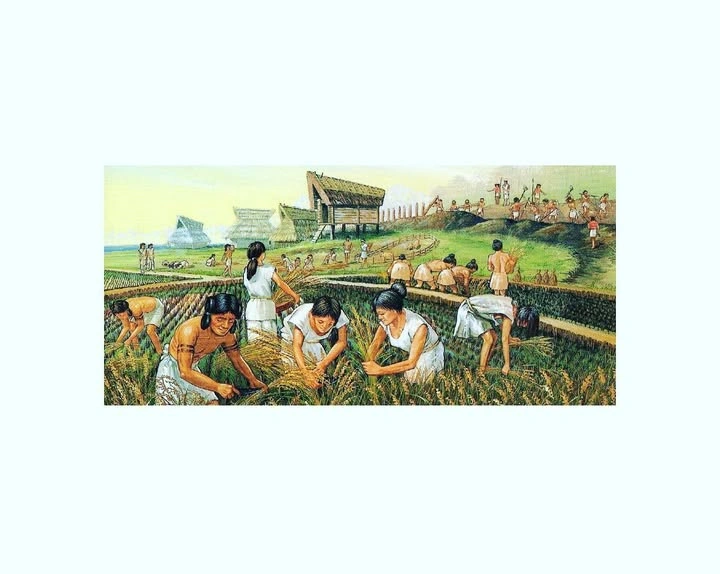
The Role of the Ayllus (Communities)
The ayllus were fundamental in the Inca Empire, as they organized agricultural production and collective labor. Through systems like ayni and minka, they ensured resources for the empire. Additionally, they contributed tributes through the mita system and preserved cultural identity.
The ayllus also had a political structure, with a leader known as the curaca, who represented the community. In this way, the ayllus played a key role in the economic, social, and political stability of Tahuantinsuyo.
Inca Art and Architecture
Inca art and architecture reflect great technical skill and a deep connection with culture and religion. The Incas were experts in building durable structures, using a mortar-free masonry technique, which allowed them to create earthquake-resistant constructions, such as Qorikancha in Cusco and Machu Picchu.
Their architecture also included an extensive network of roads, bridges, and agricultural terraces, which were designed to harmoniously integrate with the natural environment.
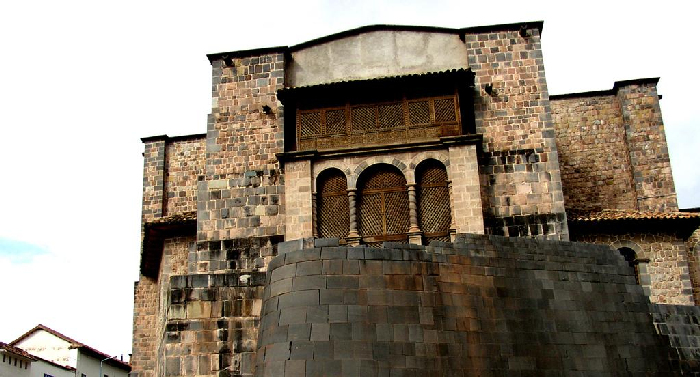
In art, the Incas excelled in textile production, using cotton and alpaca wool, featuring intricate geometric patterns. They were also skilled in ceramics and metalwork, creating objects that combined functionality with beauty.
Additionally, their art and architecture had a strong symbolic component, aligning with religious and cosmic beliefs. Many structures were designed to reflect the connection between the earthly world and the divine, emphasizing their spiritual and cultural values.
Main Constructions: Machu Picchu, Sacsayhuamán
Their main constructions, Machu Picchu and Sacsayhuamán, are two outstanding examples of Inca architectural grandeur.
- Machu Picchu: An ancient Inca citadel located in the Andes, famous for its architecture adapted to the mountainous terrain and its precision in mortar-free masonry. It is believed to have been built as a royal retreat in the 15th century.
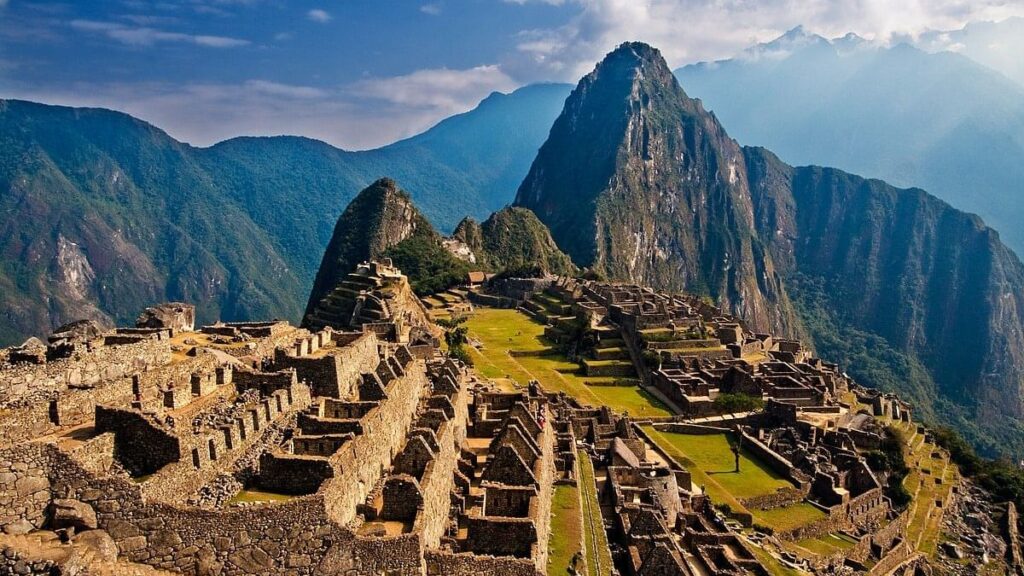
Sacsayhuamán, located near Cusco, is a ceremonial fortress known for its massive interlocking stones. Although its exact function remains unclear, it is believed to have served both religious ritual purposes and defensive functions.
Both Machu Picchu and Sacsayhuamán are remarkable examples of Inca architectural mastery.
Styles and Materials Used
The Incas primarily worked with stones such as andesite and limestone. Their use of the stone-fitting technique, known as “sillería,” allowed them to construct structures that have withstood time and earthquakes.
Economy of the Inca Empire
The Inca economy was primarily based on agriculture, trade, and a collective labor system. The Incas developed advanced agricultural techniques, such as terraced farming and irrigation systems, which allowed them to produce a variety of crops across different regions of the empire.
Additionally, they raised animals like llamas and alpacas, which provided them with meat, wool, and leather.
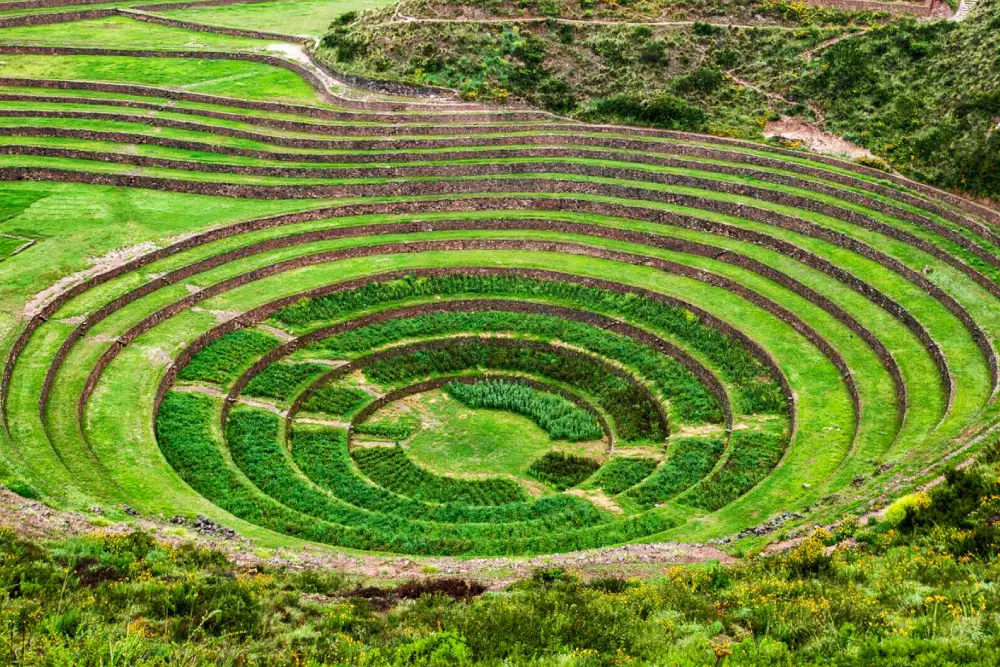
Trade was also key in the Inca economy, especially through bartering goods such as food, textiles, metals, and ceramics. There was no currency in the Inca Empire; instead, the economic system was based on labor, tributes, and resource redistribution.
The Incas implemented the mita system, which required community members to work on public projects such as the construction of roads, bridges, temples, and agricultural development, in exchange for protection and resources.
Additionally, the redistribution of goods and resources through state-run warehouses allowed the empire to maintain economic stability, ensuring prosperity and well-being, especially during times of crisis or scarcity. The centralization of economic power in the hands of the Inca state ensured a fair distribution of resources.
Agriculture and Terrace System
The Incas developed a terrace system that enabled them to practice agriculture in mountainous areas. These terraces not only expanded the cultivable land but also prevented erosion and optimized water usage, ensuring efficient farming in challenging terrains.
Trade and Inca Roads
The Qhapaq Ñan, a vast network of roads, facilitated trade and communication across the empire. Although the Incas did not have a commercial system like today, they conducted exchanges between regions, taking advantage of each area’s unique resources and products.
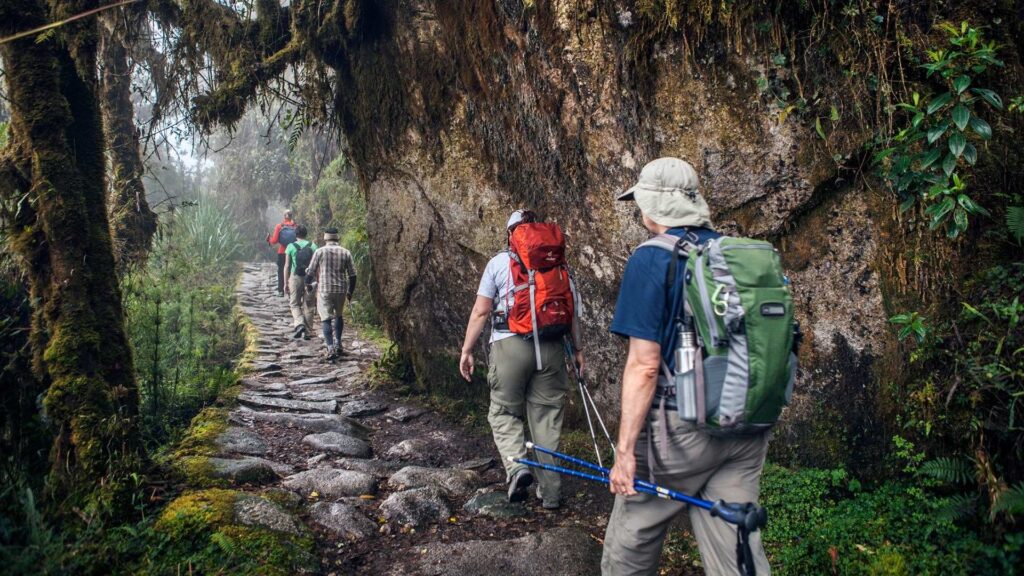
Inca Culture and Religion
The Inca culture was centered on collective labor, respect for nature, and a strict social hierarchy. The Incas excelled in architecture, art, and technology, creating impressive constructions and textiles. Their religion was polytheistic, with Inti (the Sun God) as the main deity.
Other important gods included:
- Pachamama (Goddess of the Earth)
- Viracocha (Creator God)
Religious rituals were fundamental, and the Qorikancha in Cusco was the most important temple. Sacrifices and astronomical observations were key elements of their religious and cultural life.
Language, Customs, and Festivities
Quechua was the official language of the empire, and many of their celebrations were linked to agricultural cycles and the seasons. The Inti Raymi, or Festival of the Sun, was one of the most significant celebrations, held in tribute to their main god, Inti.
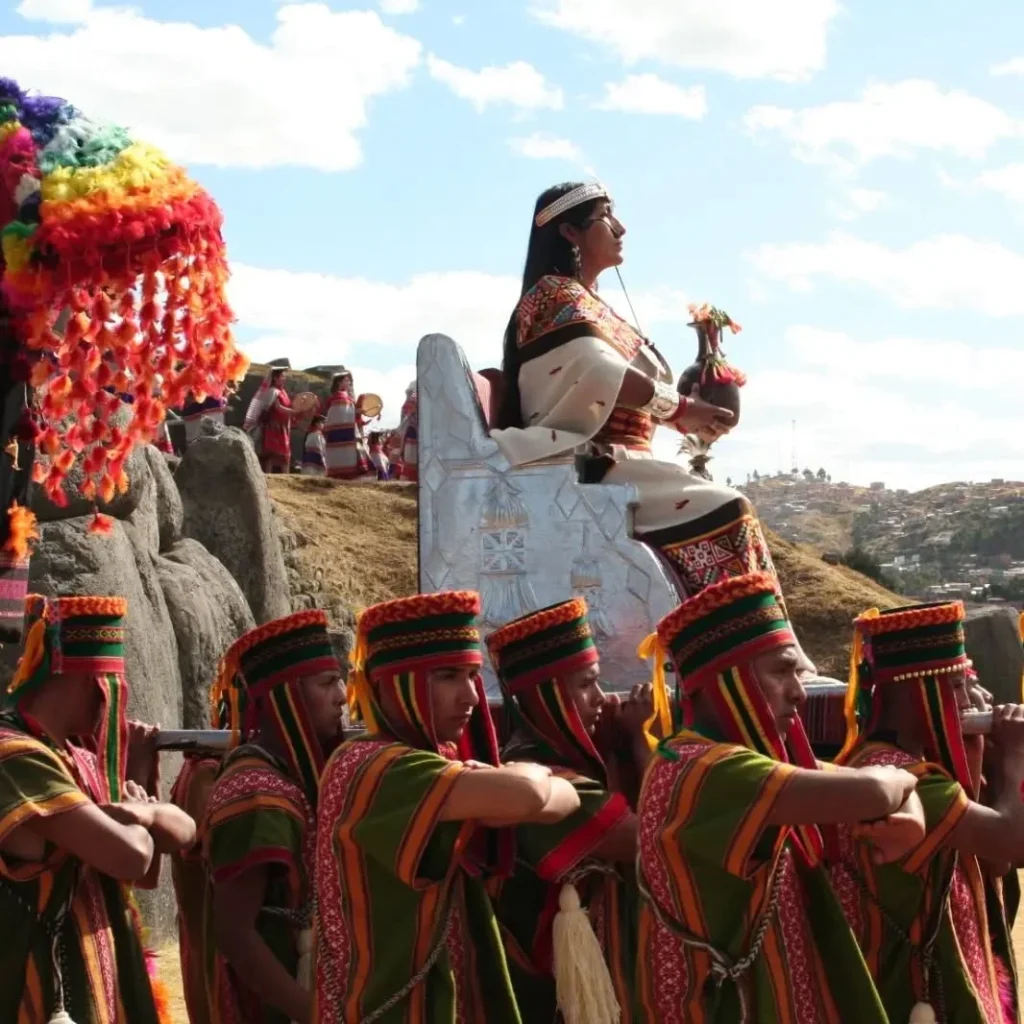
Deities and Sacred Rituals
Among the most important deities were Inti, the Sun God, Mama Killa, the Moon Goddess, and Pachamama, the Mother Earth. The Incas performed ceremonies and sacrifices in tribute to these gods, especially during harvest periods or in response to significant events.
Legacy of the Incas and Their Present Influence
The legacy of the Incas is vast and continues to have a significant influence today, especially in Andean regions. Inca architecture, such as Machu Picchu, and their road system, known as Qhapaq Ñan, remain symbols of Inca engineering. Additionally, some Andean regions still use agricultural systems like terraced farming and irrigation methods.
The Quechua language, spoken by the Incas, remains a living language, spoken by millions of people in Peru, Bolivia, and Ecuador. Traditions and festivals rooted in Inca culture, such as Inti Raymi (Festival of the Sun), are still celebrated in many places, preserving the beliefs and customs of the empire’s ancient inhabitants.
In gastronomy, the Incas introduced crops such as potatoes, corn, and quinoa, which are now staples in diets worldwide. The influence of Inca social organization and political structures is also reflected in some governance and administrative systems in the Andean region.
Main Destinations: Cusco, Machu Picchu, Sacred Valley
Places such as Cusco, Machu Picchu, and the Sacred Valley attract millions of visitors annually, eager to learn more about the heritage of the Inca Empire. Cusco, the former Inca capital, is home to significant archaeological sites and monuments, such as Sacsayhuamán and Qorikancha, which showcase the rich cultural legacy of the Incas.
Additionally, the city remains a key starting point for exploring nearby historical sites, offering a deeper insight into Inca history and architecture.
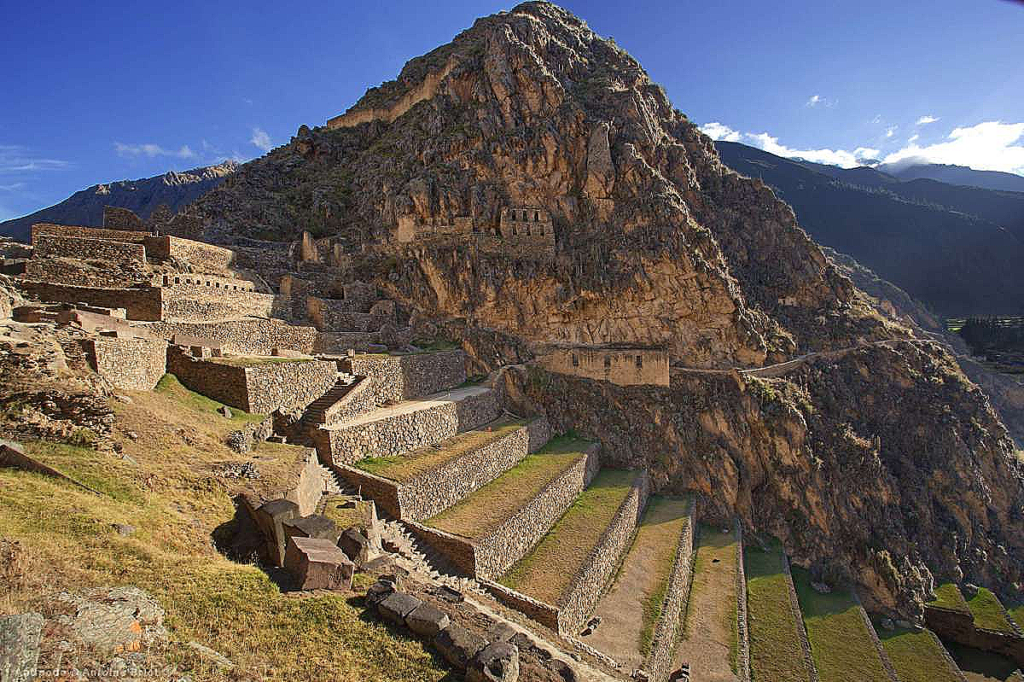
Machu Picchu stands out for its impressive architecture and its breathtaking location atop the Andes Mountains. On the other hand, the Sacred Valley preserves Inca traditions, as it is home to communities that still practice traditional agricultural techniques.
These historical sites are not only major tourist attractions but also serve as a connection to Inca history and culture, allowing visitors to experience the enduring legacy of this ancient civilization.
Tips to Make the Most of Your Visit to Inca Sites
- Research Before You Go: Learning about the history and cultural significance of the sites you’ll visit will enhance your experience.
- Book a Tour or Hire an Agency: Doing so will provide you with a guide who can offer insightful details about Inca history, architecture, and rituals.
- Respect Conservation Rules: To preserve these heritage sites, avoid touching the stones and follow the instructions of site officials.
- Visit Early or Late: To avoid crowds and make the most of natural light for photography, try to arrive early in the morning or later in the day.
- Dress Appropriately: Wear comfortable clothing and sturdy footwear for walking. Also, bring sunscreen and water, as many Inca sites are located in mountainous areas.
